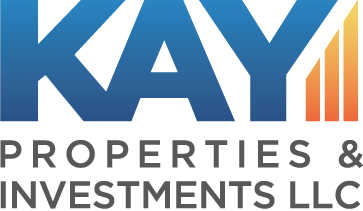By Alex Madden, Vice President, Kay Properties and Investments, LLC
Savvy real estate investors understand the primary reason for selling and buying real estate via 1031 exchange is to defer capital gains tax that would otherwise be due on the sale. By “exchanging” one or more pieces of property for one or more like-kind pieces of equal or great value helps the investor defer capital gains taxes.
However, one of the critical requirements that must take place to make any 1031 exchange work in the eyes of the Internal Revenue Service (IRS) and the individual real estate investor is to ensure that some form of debt replacement occurs in the event the relinquished property has been leveraged. Debt replacement practice basically states that when an investor acquires a replacement piece of property in a 1031 exchange, they must incur a level of debt that is equal to or greater than the amount owed on the former piece of real estate at the time of sale.
A Simple Example of How a Delaware Statutory Trust 1031 Exchange Can Help in Debt Replacement
To illustrate the concept of how a Delaware Statutory Trust 1031 exchange can greatly help solve the debt replacement equation, imagine an investor exchanging a piece of real estate with a net value (sale price minus closing costs) of $2 million. The investor has a mortgage on the property of $750,000. That $750,000 will be paid off at closing and must be replaced as part of the acquisition. In order to complete the exchange, the acquired property must be worth $2 million or more.
The investor has several options and may replace that $750,000 mortgage debt or be hit with capital gains taxes:
- Take out another mortgage of $750,000 (or more if the new property costs more than the net sales price.)
- Combine a smaller mortgage of, say, $500,000 plus adding additional cash of at least $250,000 (to equal the original debt figure.)
- Inject $750,000 which in cash which would basically replace the original debt with cash.
- Invest in a Delaware Statutory Trust 1031 exchange that already has built-in debt.
How to Replace Debt using Delaware Statutory Trust 1031 Exchanges
DST 1031 exchanges already have debt prepackaged into the investment, so they make the debt replacement component of a 1031 exchange relatively simple to accomplish. In addition, investors also have greater flexibility because they can put their investment dollars into multiple DSTs with a variety of debt and equity combinations which helps investors achieve their required debt replacement targets.
Compare this scenario to an investor who conducts a 1031 exchange with a single property, like an apartment building. Not only would they have to find a replacement investment property within the desired price range, they most likely would also have to bring in their own money to the deal while working against the mandated 180-day timeframe allowed to complete the exchange. Delaware Statutory Trust 1031 exchanges allow investors a much greater choice of replacement property options with much less effort.
One of the things many investors like about Kay Properties & Investments is the firm’s ability to provide investors seeking debt replacement a myriad of choices. Because of the firm’s ability to work with so many different sponsor companies, it provides clients the ability to participate in custom, exclusively available, off-market DST properties as well as those properties that are available to the wider marketplace.
This also means that Kay Properties & Investments marketplace features investment opportunities with leverage that span a wide range of debt levels that can accommodate just about every investor’s particular needs. Also, for investors that don’t have any debt to replace since they owned their previous property free and clear of with no loans, Kay Properties DST marketplace also has debt free DST properties which have no mortgages. So, it is easy for investors to find options that fit their investment objectives and that can match their equity and debt targets.
Investors who would like more in-depth details on options relating to how to use DSTs to replace debt in a 1031 exchange can contact Kay Properties & Investments at (855) 899-4597 to discuss your options.

